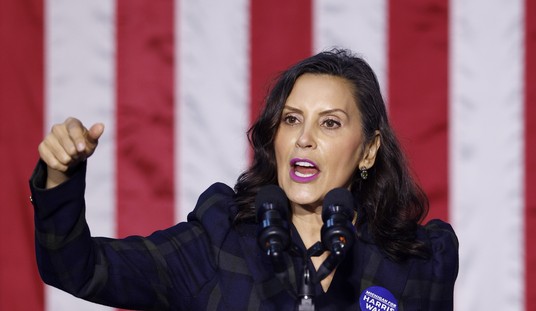At the very least, Rep. Peter King tells CNN’s Jake Tapper, it would have added to the “mosaic” that could have exposed the threat before the 9/11 attack that killed nearly 3,000 Americans. But was the mosaic missing too many holes because the NSA didn’t trawl telecom metadata, or because of the barriers between law enforcement and intelligence communities? (via The Corner)
http://www.youtube.com/watch?feature=player_embedded&v=HrUopiOhYJI#at=63
Reiterating an opinion expressed during his questioning of General Keith Alexander, the Long Island Republican told CNN’s Jake Tapper that the programs “would’ve added an extra piece of the mosaic.” He also disputed Senator Rand Paul’s claim that pre-9/11 intelligence and policework failures had nothing to do with telephone surveillance: “If we are looking in hindsight, I’d say it’s much more likely we would have found something if the FISA authorization had been there.”
I’ve read the 9/11 Commission report repeatedly (although not recently), and I’m unclear on what Rand Paul meant by “warrants,” too. However, Paul’s overall point was that the failure wasn’t so much a lack of intelligence on the threat developing in the two years prior to the attacks, but the obstacles present at the time in the US in sharing the data in order to connect dots. Under the rules at the time — remember “the wall”? — even if the NSA had found some pattern in the metadata, they might not have been able to share much of that with the FBI, at least not its law-enforcement functions, thanks to exaggerated limitations on communication based on the law-enforcement approach to terrorism before 9/11. The US government was more concerned about making a case in civil court than attacking terrorism head-on.
For a reminder of this problem, one need only read pages 78-9 of the 9/11 Commission report from Chapter 3. Here’s an excerpt:
In July 1995, Attorney General Reno issued formal procedures aimed at managing information sharing between Justice Department prosecutors and the FBI. They were developed in a working group led by the Justice Department’s Executive Office of National Security, overseen by Deputy Attorney General Jamie Gorelick.33 These procedures-while requiring the sharing of intelligence information with prosecutors-regulated the manner in which such information could be shared from the intelligence side of the house to the criminal side.
These procedures were almost immediately misunderstood and misapplied. As a result, there was far less information sharing and coordination between the FBI and the Criminal Division in practice than was allowed under the department’s procedures. Over time the procedures came to be referred to as “the wall.” The term “the wall” is misleading, however, because several factors led to a series of barriers to information sharing that developed.34
The Office of Intelligence Policy and Review became the sole gatekeeper for passing information to the Criminal Division. Though Attorney General Reno’s procedures did not include such a provision, the Office assumed the role anyway, arguing that its position reflected the concerns of Judge Royce Lamberth, then chief judge of the Foreign Intelligence Surveillance Court. The Office threatened that if it could not regulate the flow of information to criminal prosecutors, it would no longer present the FBI’s warrant requests to the FISA Court. The information flow withered.35
The 1995 procedures dealt only with sharing between agents and criminal prosecutors, not between two kinds of FBI agents, those working on intelligence matters and those working on criminal matters. But pressure from the Office of Intelligence Policy Review, FBI leadership, and the FISA Court built barriers between agents-even agents serving on the same squads. FBI Deputy Director Bryant reinforced the Office’s caution by informing agents that too much information sharing could be a career stopper. Agents in the field began to believe-incorrectly-that no FISA information could be shared with agents working on criminal investigations.36
This perception evolved into the still more exaggerated belief that the FBI could not share any intelligence information with criminal investigators, even if no FISA procedures had been used. Thus, relevant information from the National Security Agency and the CIA often failed to make its way to criminal investigators. Separate reviews in 1999, 2000, and 2001 concluded independently that information sharing was not occurring, and that the intent of the 1995 procedures was ignored routinely.37 We will describe some of the unfortunate consequences of these accumulated institutional beliefs and practices in chapter 8.
There were other legal limitations. Both prosecutors and FBI agents argued that they were barred by court rules from sharing grand jury information, even though the prohibition applied only to that small fraction that had been presented to a grand jury, and even that prohibition had exceptions. But as interpreted by FBI field offices, this prohibition could conceivably apply to much of the information unearthed in an investigation. There were also restrictions, arising from executive order, on the commingling of domestic information with foreign intelligence. Finally the NSA began putting caveats on its Bin Ladin-related reports that required prior approval before sharing their contents with criminal investigators and prosecutors. These developments further blocked the arteries of information sharing.38
It’s certainly possible that the NSA program today operates within the law, does not violate the rights of Americans, and prevents more 9/11-type attacks on the US. That case would be more salable if Congress had demonstrated any robust oversight over the programs prior to their exposure, but the disarray and misinformation coming from Capitol Hill over the last couple of weeks demonstrate pretty clearly that there hasn’t been much management of the NSA’s activities. However, King’s case that the NSA could have connected dots by metadata analysis prior to 9/11 neglects the established reality of the mismanaged counterterrorism efforts of that period, where the dots that did exist were left unconnected. If King wants to justify this program, he’d be better off making the case that Congress is keeping an eagle eye on its operation, and that it works within the law and doesn’t spy on Americans.








Join the conversation as a VIP Member